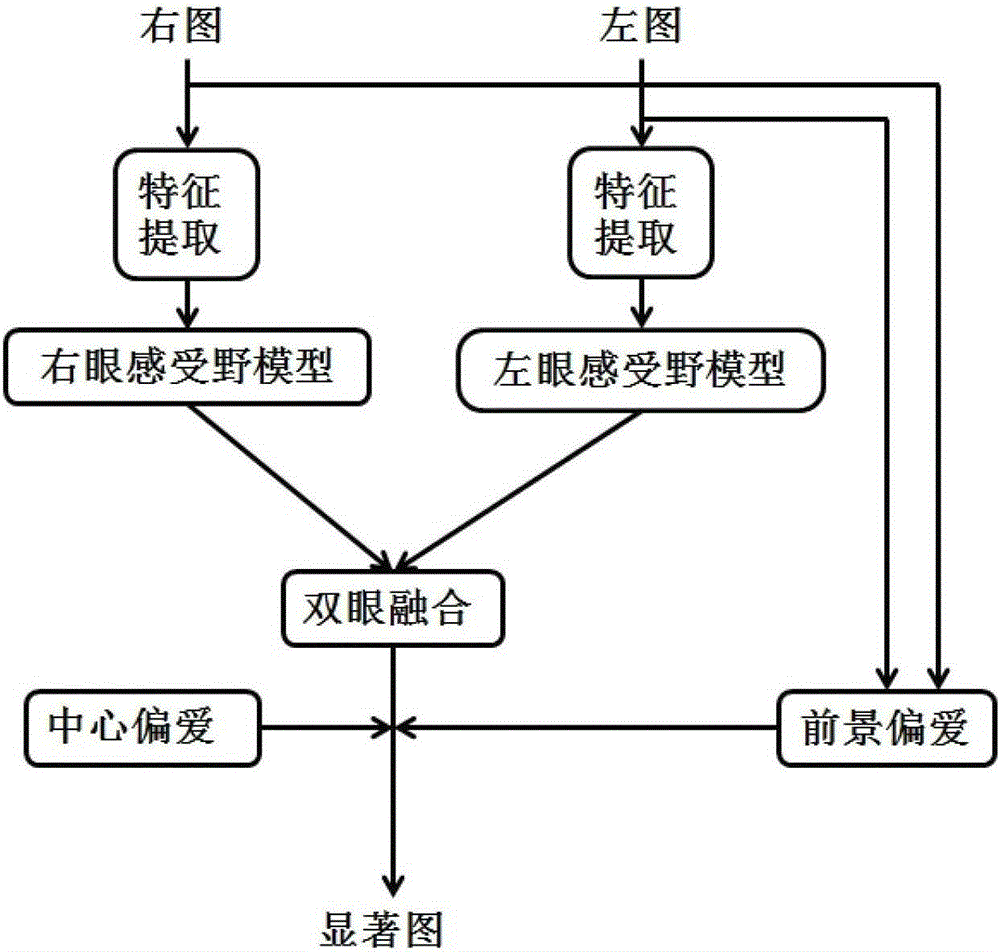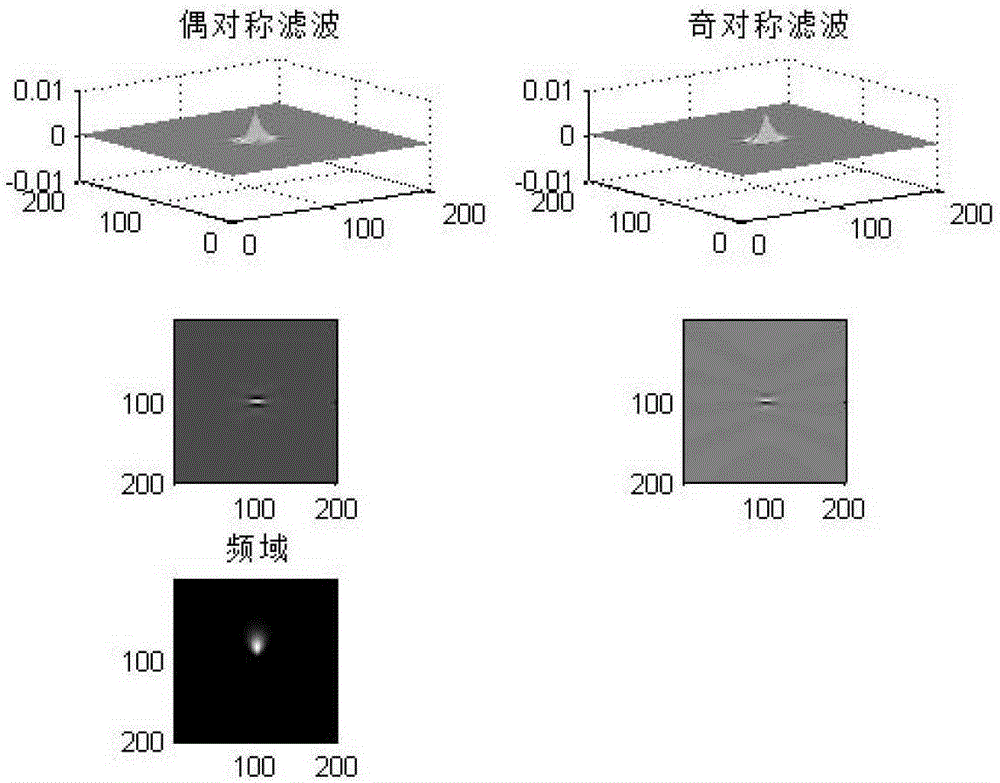Stereo vision saliency calculation method based on left and right monocular receptive fields and binocular fusion
A stereo vision and receptive field technology, applied in the field of computer vision, can solve the problems of not considering binocular fusion, not considering the problem of binocular fusion, and not fully conforming to the processing process of the stereo vision system.
- Summary
- Abstract
- Description
- Claims
- Application Information
AI Technical Summary
Problems solved by technology
Method used
Image
Examples
Embodiment 1
[0042] A stereoscopic saliency calculation method based on left and right monocular receptive fields and binocular fusion, including the following three steps:
[0043] a) Obtain the feature map of the monocular receptive field.
[0044] b) Binocular Fusion.
[0045] c) Adjust weights based on center preference and foreground preference.
[0046] Through the above three steps, the saliency distribution of stereo images can be estimated automatically. in,
[0047] The feature map for extracting the monocular receptive field is to extract the saliency distribution map under different features by establishing the left and right monocular receptive field models.
[0048] The method for extracting the feature map of the monocular receptive field mainly comprises the following steps:
[0049] a) Bottom-level feature extraction: Extract the bottom-level features of stereo images as input information.
[0050] b) Obtain the left eye feature map: Simulate the simple cells of the h...
Embodiment 2
[0068] figure 1 It is a schematic flow chart of the present invention, and in conjunction with the figure and examples, the stereoscopic vision salience calculation method is described in detail as follows:
[0069] Step 1: Extract the underlying features of the left and right images of the stereo image respectively.
[0070] People perceive light and color through the cone cells and rod cells on the retina, and then transmit this information to the visual center for further analysis.
[0071] So in this paper, the retinal nerve cells are simulated, and the brightness and color features of the image are extracted as the input of information.
[0072] Generally speaking, an image consists of three colors: red (r), green (g), and blue (b), so the brightness here is defined as I=(r+g+b) / 3, which represents the brightness feature I .
[0073] The color feature is selected for color contrast, not red, green and blue, although in physiology it is often mentioned that red, green a...
PUM
 Login to View More
Login to View More Abstract
Description
Claims
Application Information
 Login to View More
Login to View More - Generate Ideas
- Intellectual Property
- Life Sciences
- Materials
- Tech Scout
- Unparalleled Data Quality
- Higher Quality Content
- 60% Fewer Hallucinations
Browse by: Latest US Patents, China's latest patents, Technical Efficacy Thesaurus, Application Domain, Technology Topic, Popular Technical Reports.
© 2025 PatSnap. All rights reserved.Legal|Privacy policy|Modern Slavery Act Transparency Statement|Sitemap|About US| Contact US: help@patsnap.com



